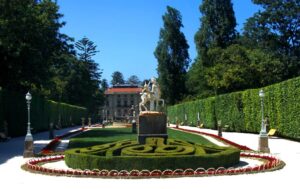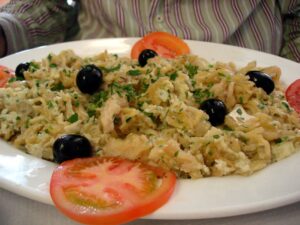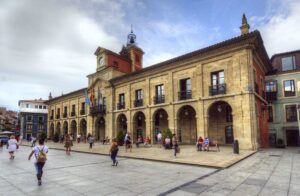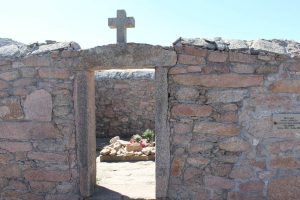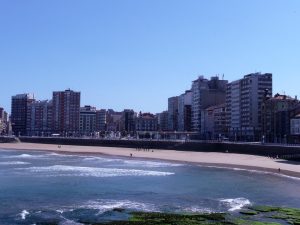
Are you looking for a mix of history, nature, and culture? Grado is a charming corner of Asturias that you cannot miss. But what secrets lie within its cobbled streets and historic monuments, and why does it attract so many travellers?
Would you like to learn about its culture, atmosphere, and gastronomy? In the following lines, we will explore the wonders this place has to offer.
Índice de contenidos
- 1 The Plaza General Ponte: the heart of Grado
- 2 The Grado Market: a journey through flavours and traditions
- 3 Historic monuments: a walk through Grado’s heritage
- 4 Parks and natural spaces: relax in green surroundings
- 5 Gastronomy: a feast for the palate
- 6 Events and festivals: experience tradition
- 7 Visitor tips: plan your trip to Grado
The Plaza General Ponte: the heart of Grado
The Plaza General Ponte is the nerve centre of the town, where the commercial and social life of the municipality is concentrated. Pedestrianised a few years ago, it is home to numerous shops, bars, and restaurants that give it a vibrant and welcoming atmosphere.
It is surrounded by historic buildings such as the Town Hall and the Casa de Cultura. Additionally, the square is the perfect setting to enjoy traditional markets and fairs.
Furthermore, for those who wish to explore the region in a planned manner, the organised trips on the Camino de Santiago can be an excellent option. These packages allow you to make the most of the experience without worrying about logistical details, offering additional support on your journey.
The Grado Market: a journey through flavours and traditions
The famous Grado market is a place that visitors cannot ignore. Known for its high-quality local products such as cheeses, cold cuts, and fruits, it offers the opportunity to interact with vendors and taste the authentic flavours of Asturias.
While wandering through the colourful and lively stalls, you can’t help but think of the various routes you could explore, such as the Portuguese Coastal Camino. This route also allows you to immerse yourself in the local culture in a unique way, similar to the experience offered by the market.
Taking home culinary souvenirs from these places will perfectly complement any adventure in this fascinating region.
Historic monuments: a walk through Grado’s heritage

The town boasts a rich history reflected in its monuments and historic buildings. The Church of San Pedro, with its imposing Baroque facade, is one of the main attractions.
The Chapel of Los Dolores, with its neoclassical style, and the Palace of Miranda-Valdecarzana, an 18th-century gem, are also worth a visit. These sites offer a window into the past and allow visitors to appreciate the architecture and history of the area.
If you’re interested in exploring beyond the city, a specialised company can guide you on the various available routes, such as the route of the Camino de Santiago from Baiona. These options enhance your visit, allowing you to discover more about the region and its heritage.
Moreover, if you’re curious about exploring other routes, there are different itineraries you can take, such as the English Camino from Ferrol. These itineraries provide an additional opportunity to learn about the region’s history and culture, enriching your experience.
Parks and natural spaces: relax in green surroundings
Grado offers several parks and natural spaces ideal for relaxing and enjoying the outdoors. The Parque de San Antonio, with its lush trees and picnic areas, is a perfect place to spend a day with the family.
Near Grado, you’ll find the Sierra de Begega, with its hiking trails and panoramic viewpoints, attracting nature lovers. These green spaces allow visitors to escape the daily hustle and connect with the natural beauty of Asturias.
Another interesting proposal is the Guanga waterfalls, located in San Andrés de Trubia, Asturias. This impressive natural destination features three waterfalls in a wooded setting. They are approximately 20 minutes by car from Grado, accessible through family-friendly hiking routes.
Another option that will provide an excellent experience is the French Camino from Roncesvalles. This route, with its rich history and landscapes, will beautifully enhance any visit to the natural spaces.
Gastronomy: a feast for the palate
Grado’s gastronomy is a delight for the senses. Typical dishes such as fabada and cachopo showcase its culinary richness. The local restaurants offer a wide variety of options, from traditional establishments to modern venues. The cider, an emblematic drink of Asturias, is an ideal accompaniment to enjoy these dishes.
If you’re interested in combining your gastronomic experience with outdoor activities, explore the different routes available, such as the Portuguese Coastal Camino.
Exploring these routes can add an extra dimension to your visit, allowing you to discover more about the region while savouring its culinary delights. Visitors can also participate in food festivals to sample a selection of the best local products.
Events and festivals: experience tradition

Grado hosts a series of events and festivals that reflect local culture and traditions. The patronal festivals of San Pelayo, with their parades, music, and fireworks, are a time of community celebration.
The Carriage Parade, with its colourful and elaborate floats, is another highlight that attracts visitors from across the region. Participating in these festivities is a unique opportunity to immerse yourself in local life and experience the joy and pride of the community.
Visitor tips: plan your trip to Grado
To make the most of your visit, consider some practical tips. Firstly, the best times of the year to enjoy the destination are spring and autumn when the weather is pleasant and outdoor activities are more enjoyable.
Moreover, the region offers a wide range of accommodation options. Hotels of various categories and charming rural houses allow visitors to choose the option that best suits their needs and budget.
As for transport, the area has an efficient bus network that connects with other cities in Asturias, facilitating mobility and exploration of the surroundings.
By following these tips, visitors can enjoy a memorable and enriching experience in this charming town. Make the most of every moment!

